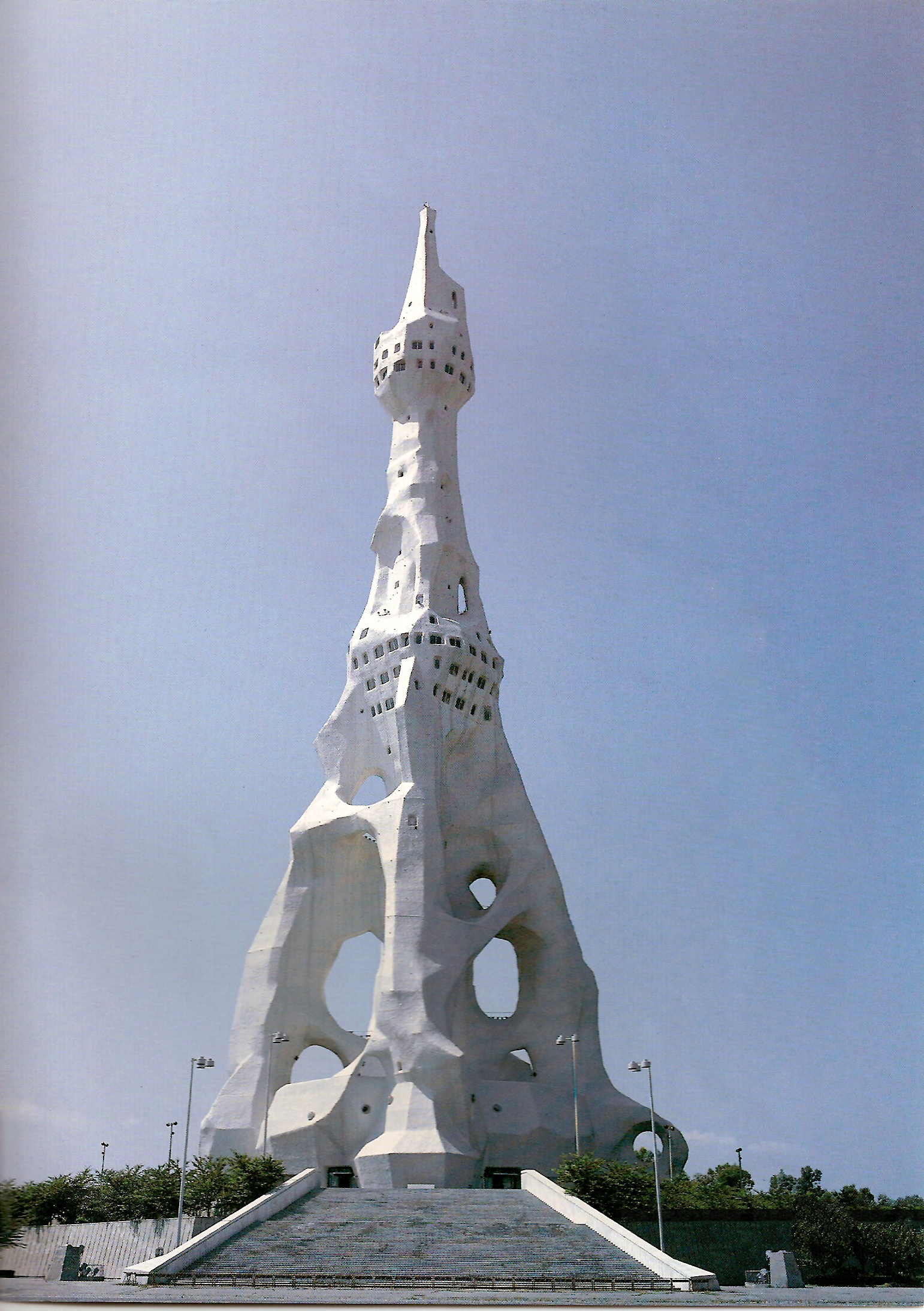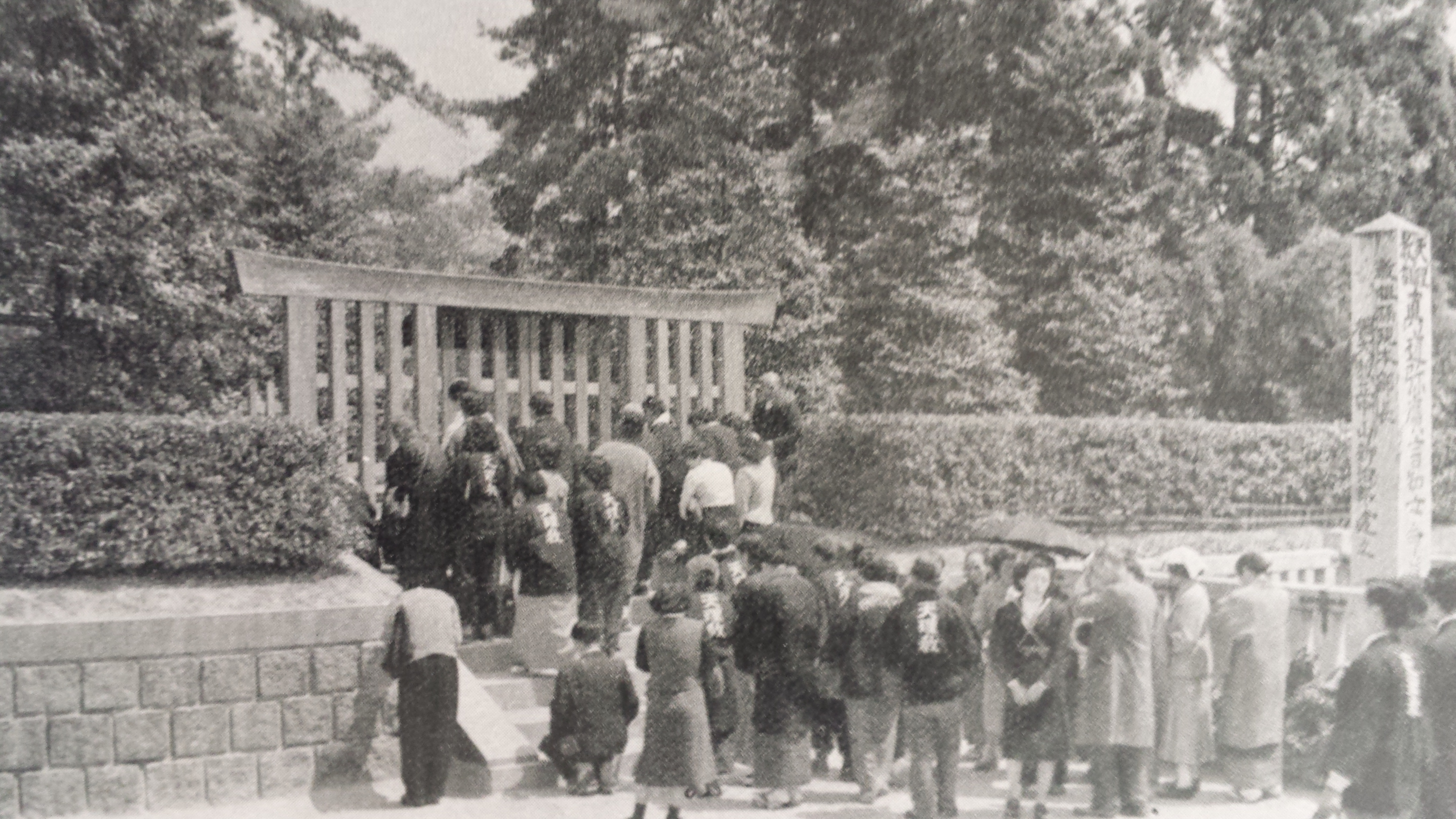|
Tenri Seminary
Tenri Seminary (天理教校 ''Tenrikyōkō'') is the seminary of the Japanese new religion Tenrikyo, located in Tenri, Japan. History In April 1900, Tenri Seminary was established to train and educate Tenrikyo followers in ministry. Initially, the seminary was a four-year course offering coursework at the middle school level along with coursework on Tenrikyo doctrine and rituals. Since its establishment, Tenri Seminary has gone through a number of reorganizations. In 1908, the seminary was reorganized into the six-month Special Course (別科 ''Bekka'') while Tenri Middle School continued as a separate organization. In 1938, the two-year Graduate Seminary program was established and two new courses were added – the Preparatory program which would educate graduates of Tenri Middle School and Tenri Girls School, and the Asian program which would train ministers for mission work in Asia. In April 1941, the seminary underwent another reorganization. The most notable change was that ... [...More Info...] [...Related Items...] OR: [Wikipedia] [Google] [Baidu] |
Seminary
A seminary, school of theology, theological seminary, or divinity school is an educational institution for educating students (sometimes called ''seminarians'') in scripture, theology, generally to prepare them for ordination to serve as clergy, in academics, or mostly in Christian ministry. The English word is taken from the Latin ''seminarium'', translated as ''seed-bed'', an image taken from the Council of Trent document ''Cum adolescentium aetas'' which called for the first modern seminaries. In the United States, the term is currently used for graduate-level theological institutions, but historically it was used for high schools. History The establishment of seminaries in modern times resulted from Roman Catholic reforms of the Counter-Reformation after the Council of Trent. These Tridentine seminaries placed great emphasis on spiritual formation and personal discipline as well as the study, first of philosophy as a base, and, then, as the final crown, theology. The olde ... [...More Info...] [...Related Items...] OR: [Wikipedia] [Google] [Baidu] |
Japanese New Religions
Japanese new religions are new religious movements established in Japan. In Japanese, they are called or . Japanese scholars classify all religious organizations founded since the middle of the 19th century as "new religions"; thus, the term refers to a great diversity and number of organizations. Most came into being in the mid-to-late twentieth century and are influenced by much older traditional religions including Buddhism and Shinto. Foreign influences include Christianity, the Bible and the writings of Nostradamus. Before World War II In the 1860s Japan began to experience great social turmoil and rapid modernization. As social conflicts emerged in this last decade of the Edo period, known as the Bakumatsu period, some new religious movements appeared. Among them were Tenrikyo, Kurozumikyo and Oomoto, sometimes called ''Nihon Sandai Shinkōshūkyō'' ("Japan's three large new religions"), which were directly influenced by Shinto (the state religion) and shamanism. ... [...More Info...] [...Related Items...] OR: [Wikipedia] [Google] [Baidu] |
Tenrikyo
is a Japanese new religion which is neither strictly monotheistic nor pantheistic, originating from the teachings of a 19th-century woman named Nakayama Miki, known to her followers as "Oyasama". Followers of Tenrikyo believe that God of Origin, God in Truth, known by several names including "Tsukihi," " Tenri-Ō-no-Mikoto" and "Oyagamisama (God the Parent)" revealed divine intent through Miki Nakayama as the Shrine of God and to a lesser extent the roles of the Honseki Izo Iburi and other leaders. Tenrikyo's worldly aim is to teach and promote the Joyous Life, which is cultivated through acts of charity and mindfulness called . The primary operations of Tenrikyo today are located at Tenrikyo Church Headquarters (Tenri, Nara, Japan), which supports 16,833 locally managed churches in Japan,Japanese Ministry of Education. ''Shuukyou Nenkan, Heisei 14-nen'' (宗教年鑑平成14年). 2002. the construction and maintenance of the and various community-focused organisations. It h ... [...More Info...] [...Related Items...] OR: [Wikipedia] [Google] [Baidu] |
Tenri, Nara
is a city located in Nara Prefecture, Japan. The modern city was founded on April 1, 1954, and is named after the Japanese new religion Tenrikyo, which has its headquarters in the city. As of April 1, 2015, the city has an estimated population of 66,866, and 29,169 households. The population density is 800.61 persons per km2, and the total area is 86.37 km2. History Tenri was briefly the capital of Japan during the reign of Emperor Ninken. The life of the Imperial court was centered at ''Isonokami Hirotaka'' Palace where the emperor lived in 488–498.Koch, W. (1904)''Japan; Geschichte nach japanischen Quellen und ethnographische Skizzen. Mit einem Stammbaum des Kaisers von Japan,'' p. 13 Education *Primary schools **Senzai Elementary School **Idodo Elementary School **Yamanobe Elementary School **Nikaido Elementary School **Tenri Elementary School (Private School) **Yanagimoto Elementary School **Tanbaichi Elementary School **Ichinomoto Elementary School **Fukuzumi Ele ... [...More Info...] [...Related Items...] OR: [Wikipedia] [Google] [Baidu] |
Japan
Japan ( ja, 日本, or , and formally , ''Nihonkoku'') is an island country in East Asia. It is situated in the northwest Pacific Ocean, and is bordered on the west by the Sea of Japan, while extending from the Sea of Okhotsk in the north toward the East China Sea, Philippine Sea, and Taiwan in the south. Japan is a part of the Ring of Fire, and spans an archipelago of 6852 islands covering ; the five main islands are Hokkaido, Honshu (the "mainland"), Shikoku, Kyushu, and Okinawa. Tokyo is the nation's capital and largest city, followed by Yokohama, Osaka, Nagoya, Sapporo, Fukuoka, Kobe, and Kyoto. Japan is the eleventh most populous country in the world, as well as one of the most densely populated and urbanized. About three-fourths of the country's terrain is mountainous, concentrating its population of 123.2 million on narrow coastal plains. Japan is divided into 47 administrative prefectures and eight traditional regions. The Greater Tokyo Ar ... [...More Info...] [...Related Items...] OR: [Wikipedia] [Google] [Baidu] |
Tenrikyo Church Headquarters
Tenrikyo Church Headquarters (''Tenrikyo Kyokai Honbu'' 天理教教会本部) is the main headquarters of the Tenrikyo religion, located in Tenri, Nara, Japan. This establishment is significant to followers because it is built around the '' Jiba'', the spot where followers believe the god Tenri-O-no-Mikoto conceived humankind. Organization Hierarchy The organization of Tenrikyo Church Headquarters consists primarily of the headquarters proper (本部 ''honbu''), grand churches (大教会 ''daikyōkai''), branch churches (分教会 ''bunkyōkai''), and dioceses (教区 ''kyōku''). Under the management of the main headquarters is a dual organizational structure, such that the grand churches and branch churches minister to adherents genealogically while the dioceses minister to adherents geographically. At the top of the church hierarchy is the '' Shinbashira,'' who is defined as the "spiritual and administrative leader" of Tenrikyo Church Headquarters. Many of the curren ... [...More Info...] [...Related Items...] OR: [Wikipedia] [Google] [Baidu] |
Tenrikyo Theology
Tenrikyo theology (天理教学 ''Tenrikyōgaku'') is the theology of the Tenrikyo religion. The discipline of Tenrikyo theology consists of scriptural studies (studies of the ''Ofudesaki,'' ''Mikagura-uta,'' and '' Osashizu''), historical theology, dogmatic theology, and practical theology. Scripture God Names In historical documents and scriptures related to Tenrikyo, a number of different appellations are ascribed to God. In the ''Ofudesaki'', God identified as three different entities. In 1869, when the first verses were composed, God initially identified as ''kami'' (神), a spirit in the Japanese Shinto tradition. The designation ''kami'' was broader than the Abrahamic notion of God, as it could be applied to any object that possessed divine power or inspired awe, such as animals, trees, places, and people. However, the ''Ofudesaki'' stressed the uniqueness of the ''kami'' by adding various qualifiers such as ''moto no kami'' (God ''of origin''), ''shinjitsu no kami'' ( ... [...More Info...] [...Related Items...] OR: [Wikipedia] [Google] [Baidu] |
History Of Tenrikyo
The History of Tenrikyo concerns the social and institutional development of Tenrikyo, from the day the teachings were founded by Miki Nakayama on October 26, 1838, to the present day. Confraternities Since the early 1860s, Miki Nakayama had asked her followers to form confraternities (''ko'' 講). One of the earliest examples was the Shinmei confraternity, formed sometime in April 1878. Obtaining government authorization From the 1870s, Miki Nakayama and her followers were constantly being persecuted by local government authorities and from members of established religions for expressing their beliefs and performing the Service. To put an end to the persecution, various followers sought for recognition from different religious and state authorities, even though this was against the wishes of Nakayama. Tenrikyo could not apply as a completely independent religion because Japanese law during the Meiji period did not grant civil authorization to churches outside of the established ... [...More Info...] [...Related Items...] OR: [Wikipedia] [Google] [Baidu] |
Major Religious Groups
The world's principal religions and spiritual traditions may be classified into a small number of major groups, though this is not a uniform practice. This theory began in the 18th century with the goal of recognizing the relative levels of civility in different societies, but this practice has since fallen into disrepute in many contemporary cultures. History of religious categories Christian categorizations Initially, Christians had a simple dichotomy of world beliefs: Christian civility versus foreign heresy or barbarity. In the 18th century, "heresy" was clarified to mean Judaism and Islam; along with paganism, this created a fourfold classification which spawned such works as John Toland's ''Nazarenus, or Jewish, Gentile, and Mahometan Christianity'', which represented the three Abrahamic religions as different "nations" or sects within ''religion'' itself, the "true monotheism." Daniel Defoe described the original definition as follows: "Religion is properly the ... [...More Info...] [...Related Items...] OR: [Wikipedia] [Google] [Baidu] |
Proselytism
Proselytism () is the policy of attempting to convert people's religious or political beliefs. Proselytism is illegal in some countries. Some draw distinctions between '' evangelism'' or ''Da‘wah'' and proselytism regarding proselytism as involuntary or coerced but it can also be understood to merely be a synonym. Etymology The English-language word ''proselytize'' derives from the Greek language prefix (, "toward") and the verb (, "I come") in the form of (, "newcomer"). Historically, in the Koine Greek Septuagint and New Testament, the word ''proselyte'' denoted a Gentile who was considering conversion to Judaism. Although the word ''proselytism'' originally referred to converting to Judaism (and earlier related to Gentiles such as God-fearers), it now implies an attempt of any religion or religious individuals to convert people to their belief. Arthur J. Serratelli, the Catholic Bishop of Paterson, New Jersey, observed that the meaning of the word ''proselytism'' has ch ... [...More Info...] [...Related Items...] OR: [Wikipedia] [Google] [Baidu] |







